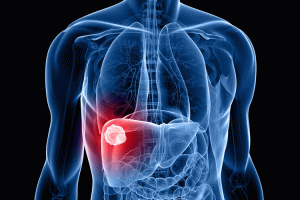
Scientists show in-vivo and in-vitro how liver cancer stem cells are born, solving a central scientific mystery in this field
Liver cancer is one of the deadliest cancers.
It is insidious and does not present symptoms until it has progressed considerably, at which point, treatment options are limited and chances of survival are low.
The most common type of liver cancer is hepatocellular carcinoma (HCC).
HCC is most frequently seen in patients with chronic liver conditions such as hepatitis B or C and cirrhosis, and it takes the lion's share in mortality rates from liver cancer.
Over the past two decades or so, research on liver cancer and cancer in general has advanced with great strides.
Scientists have found that all cancer cells for a particular type of cancer are not alike.
Among a set of cancer cells, there is a rare subset of cells called cancer stem cells (CSCs) which function similarly to normal stem cells in that they are what cause cancer cells to form, renew, and proliferate.
In a cancer patient, if you resected a tumour and removed all other cancer cells but left CSCs alive, the CSCs would cause the cancer to grow back.
CSCs are what sustain the cancer.
But what causes CSCs to form?
Research posits that normal stem cells mutate into CSCs under specific body environmental and/or genetic conditions.
However, in the case of the liver, until recently, studies were yet to confirm the particular conditions and triggers for this conversion to CSCs, and whether these are environmental or genetic or both.
Now, for the first time, a group of scientists from Okayama University, led by Professor Masaharu Seno and Said Mohamed Abdelsabour Afify, has been able to develop CSCs from a type of normal stem cells by merely exposing them to what are believed to be favourable body environmental conditions, without introducing any mutations or foreign genes.
The study has been published in the British Journal of Cancer.
"This is the world's first successful establishment of a liver CSC model from normal iPSCs without genetic manipulation," Prof. Seno remarks.
Normal iPSCs, or normal induced pluripotent stem cells, are a type of stem cell that can regenerate to develop into any type of human tissue, given the right conditions.
In their laboratory, Prof. Seno and team placed iPSCs obtained from mice in a conditioned medium of HCC cell lines (comprising a type of liver-cancer derived cells called Huh7 cells).
These Huh7 cells secreted chemicals that cause inflammation, creating an environment mimicking chronic inflammation in the liver.
This was expected to trigger the conversion of the iPSCs to liver CSCs.
To find out whether this conversion occurred, the scientists had to evaluate in vivo whether the resultant cells formed malignant tumours.
So, they injected the cells into the livers of immunodefficient mice.
With high efficiency, after only 28 days of injection, the livers had developed malignant tumours.
In contrast, untreated iPSCs gave rise to teratoma-like tumours with various germ layers, which were benign.
Observation and chemical assays revealed that a considerable proportion of the cells of the malignant tumours had high nuclear-to-cytoplasmic ratios and high proliferation rates.
Further, in these cells, liver cancer-associated markers such as alpha fetoprotein, glypican 3 and carcinoembryonic antigen, were expressed.
Thus, the cells they had managed to develop from the iPSCs were not only confirmed CSCs, but also confirmed liver CSCs.
This work shows that liver CSCs could be born from normal stem cells in an environment of chronic inflammation without genetic mutation.
It also provides a model for how liver cancer cells could be metastasising.
A model is a prerequisite for further scientific study.
With the model that this study establishes, more targeted drugs could be developed and tested and perhaps, prevention techniques, such as tailored diets, can be discovered.
The scientists plan to test their model using human-tissue-derived iPSCs in future and adapt it to other human tissues in addition to liver tissue.
Speaking of his vision, Prof. Seno says: "The results of further investigations will make liver cancer prevention, diagnosis, and treatment surer and surer. Finally, one day, the number of liver cancer patients in the world will reduce and the complete treatment of liver cancer will be possible."
The journey to the future that Prof. Seno envisions, begins here.
Source: Okayama University